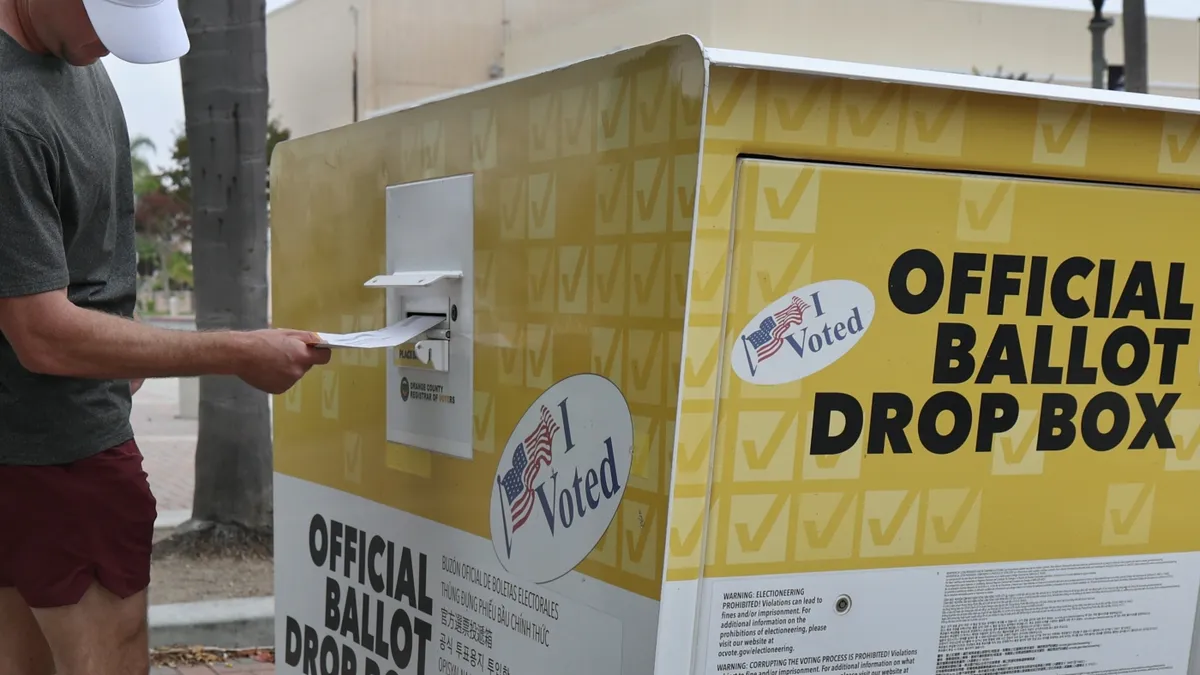
Off-year elections often serve as a referendum on the sitting president and his party. This year, the focus is on President Trump and the Republican Party. With Trump's unpopularity particularly pronounced among independents, who play a crucial role in swing districts, the narratives and margins emerging from the elections on November 4 will be significant. These results could provide early insights into how the political landscape may evolve leading up to the 2026 elections. Here are five key questions to consider regarding this pivotal electoral event:
One pressing question is to what extent Trump is a drag on Republican candidates. In the 2018 midterm elections, Republicans lost 40 House seats, coinciding with Trump's approval rating at 40%, according to Gallup. Currently, his approval rating stands at a similar 41%. Democrats are strategically leveraging Trump's image in the 2025 elections, frequently mentioning him in advertisements to connect their Republican opponents to his controversial legacy. Conversely, many Republican candidates are distancing themselves from Trump, particularly in key elections occurring in traditionally left-leaning states like Virginia and New Jersey, as well as the New York mayoral race and a critical ballot initiative in California. Historically, these off-year elections tend to favor the party opposite of the sitting president, providing an early avenue for voters to express their discontent.
A crucial election to watch is California's Proposition 50. This proposition will decide whether to temporarily overturn the current mandate that congressional districts be redrawn by an independent commission. If passed, this could give Democrats the opportunity to counteract the redistricting efforts led by Republicans in states like Texas. The outcome of this election will also serve as an early litmus test for California Governor Gavin Newsom, who is considered a potential presidential candidate for 2028. The opposition campaign has attempted to frame the vote against Proposition 50 as a way to prevent Newsom from overreaching in power, while Newsom himself has actively supported the measure.
Another significant trend to monitor is whether Latinos are shifting away from the Republican Party. In the 2024 presidential election, Trump made notable gains among Latino voters, achieving better results than any previous Republican. However, recent polling suggests a decline in support for Trump and the GOP within this demographic, particularly due to issues such as mass deportations and rising costs of living. New Jersey is a key state to observe, as Trump improved his performance in counties with substantial Latino populations. For instance, counties like Passaic (45% Latino), Hudson (41%), Cumberland (36%), and Union (35%) could be indicative of shifting voting patterns among Latino voters.
The variety of candidates in these elections will provide different case studies on how to effectively campaign as a Democrat. In New York, candidate Zohran Mamdani has gained attention for his focus on affordability, yet he has also faced backlash for his past statements regarding Israel and police funding. His election performance could influence whether Democrats nationally adopt a similar progressive messaging strategy or lean towards the more traditional approaches of gubernatorial candidates like Abigail Spanberger in Virginia and Mikie Sherrill in New Jersey. The diversity of voter opinions within the Democratic Party complicates the messaging landscape, as candidates must balance authenticity with broad appeal.
The nation is currently facing the possibility of the longest government shutdown in history, with no clear resolution in sight. The results of Tuesday's elections might influence the ongoing negotiations, particularly regarding health care subsidies that are set to expire soon. Democrats are advocating for the continuance of these subsidies to prevent significant premium increases for millions of Americans, while Republicans are insisting on reopening the government before any negotiations can take place. Past shutdowns have shown that public opinion can shift blame onto the president; however, the current sentiment is less overwhelming than it was during the shutdown in 2019. Tuesday's elections could provide a clearer picture of voter sentiment and potentially alter the dynamics of the ongoing stalemate.